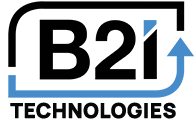If you’ve ever looked closely at your Investor Relations (IR) website and wondered why it doesn’t show up prominently in search results, the culprit might be hiding in plain sight: iFrames.
Many IR vendors still rely on iFrames to “plug” filings, press releases, or entire investor sections into your corporate site. It looks simple on the surface, but behind the scenes, iFrames come with serious SEO and usability trade-offs.
Let’s break it down.
What’s an iFrame, Really?
An iFrame (inline frame) is essentially a window embedded in your website that displays another web page. Instead of your content living directly on your site, it’s being “borrowed” from a separate server and displayed inside that frame.
It’s a shortcut that saves development work – but it’s a shortcut with a cost.
The SEO Problem: Invisible Content
Search engines like Google don’t treat iFramed content as part of your actual site. That means:
• Your press releases, filings, and news items often don’t get indexed under your corporate domain.
• Investors searching for your earnings release may land on your vendor’s site – not yours.
• Your corporate brand loses visibility, while your vendor’s URL gains it.
The UX Problem: A Site Within a Site
Beyond SEO, iFrames create a clunky experience for investors:
• Poor mobile responsiveness (frames don’t always resize well).
• Accessibility issues for screen readers.
• Slow load times because the site is calling external servers.
• Branding inconsistencies (your sleek design wrapped around an old-school frame).
In an industry where credibility and trust are everything, that’s not the impression you want to leave.
Why Vendors Use iFrames (and Why It’s Outdated)
To be fair, vendors didn’t choose iFrames out of laziness. For years, they were an easy way to push data into websites without direct integration. But technology and investor expectations have moved on.
Today, companies need clean, indexable, API-driven content that works seamlessly with their main site. Anything less feels outdated.
What to Do Instead
The solution is simpler (and smarter) than it sounds:
• Use APIs / WordPress shortcode and data feeds to pull content directly into your site.
• Manage filings, news, and governance items in a secure portal (like B2i’s IROffice) and publish them instantly – no waiting on a vendor.
• Keep your corporate domain in control so every update boosts your brand’s SEO, not your provider’s.
• Design with flexibility so your investor section matches your corporate site seamlessly – not a “site within a site.”
How B2i Approaches It Differently
At B2i, we don’t believe in duct-taping your investor content into a frame. Our open-architecture approach means:
• Content lives directly on your domain.
• You get the SEO credit.
• Updates are instant, controlled by our team, yours, or another vendors.
• And it’s all scalable – whether you’re a micro-cap or a global brand.
It’s about giving you control, visibility, and credibility – the three things iFrames quietly chip away at.
The Bottom Line
If your IR site is built on iFrames, you’re paying for content that investors and analysts may never find – and giving away credit to someone else’s domain.
It’s time to rethink the frame. Your story deserves to be front and center, on your site, under your control, optimized for your future.
Curious if your IR section is built on iFrames? Request a free IR site review from B2i and we’ll show you exactly what’s happening behind the curtain, sign up here: b2itech.com/review
